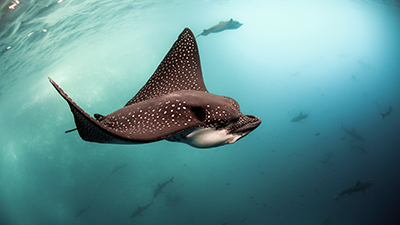プログラム調査日程・空き状況・参加費用等、海外調査に関するお問い合わせは、アースウォッチ・ジャパン事務局にて承ります。info@earthwatch.jp までお気軽にお問い合わせください。
Join scientists at one of the oldest and largest shark and ray research programs in the world and help protect sharks and rays from overexploitation and environmental threats.

More than a third of sharks and rays around the world are at risk of extinction, making them the second most threatened vertebrate group on earth (after amphibians). Yet off the coast of southwest Florida, blacktip, great hammerhead, tiger, sandbar, and many other shark species are present in numbers seen in few other places in the world. This shark haven is largely possible due to science-based management of shark fisheries in the U.S. While there isn’t a large market for shark meat or fins in the U.S., some shark species are fished in U.S. waters and exported to other countries. This shark fishing is heavily regulated to ensure the number of sharks caught is low enough to sustain their populations or even allow for an increase. In Florida, shark catch limits are informed by data collected by Mote Marine Laboratory and Aquarium as part of the longest-running shark abundance survey in the nation.
From a boat on the open ocean, you’ll assist researchers in identifying shark species, tagging and measuring individuals, and collecting environmental data such as water depth, temperature, and conditions. This information will inform federal assessments and management decisions for sharks, ensuring their populations will continue to thrive.
You’ll also have the opportunity to help establish research on Florida’s ray populations. Little is known about the stingrays that live off the coast of Florida—in fact, we don’t even know how many there are. You’ll help scientists conduct stingray surveys to understand how environmental factors and human impacts, including harmful algal blooms known as “red tide,” are affecting the species.
ボランティアの役割
Explore the bays and open ocean around Sarasota Florida as you.

Volunteers will help bait and deploy longlines and drumlines to catch a variety of sharks. The team will then measure, identify, and tag the sharks before releasing them.

Work with researchers to pilot different methods of surveying ray populations, including baited cameras, longlines, and seine nets. These tests will be used to establish a method for assessing Florida’s stingray populations.

From the boat, the team will record the conditions of the habitat where sharks and rays are being monitored, including water depth, ocean floor type, salinity, dissolved oxygen, temperature, and weather conditions.
